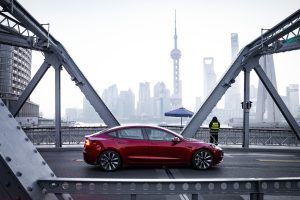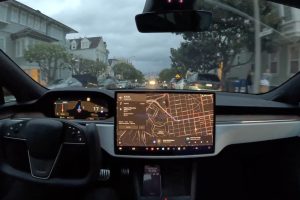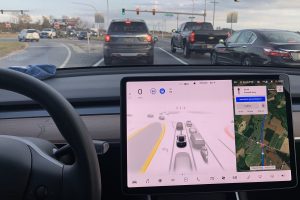- 🚗 Mobileye has ceased the development of its lidar systems for autonomous vehicles, aligning with Elon Musk’s long-held view that lidar is unnecessary.
- 🤖 Elon Musk has been critical of lidar technology, considering it a “fool’s errand” and advocating for camera-based solutions like Tesla Vision.
- 🎥 Tesla uses a camera-based system called Tesla Vision for developing self-driving technology, but still uses lidar for data validation.
- 📉 Terminating the lidar division is expected to save Mobileye $60 million annually by avoiding future development expenditures.
- 📡 Despite this, Mobileye continues to develop in-house imaging radar, projected to commence production next year.
In the dynamic world of autonomous vehicles, technological advances rapidly shape industry landscapes. One significant development making waves is Mobileye’s decision to terminate its lidar system development, echoing the sentiments of tech mogul Elon Musk. Let’s delve into this strategic move’s implications and discuss what it means for the future of self-driving technology.
Why Mobileye Is Steering Away from Lidar Systems
Mobileye, a leader in automotive technology, recently announced its decision to halt further internal development of lidar systems— a move that aligns with previous predictions by Elon Musk. Musk, a vocal critic of lidar technology, has long argued that it’s a technological dead-end for self-driving vehicles, famously calling it a “fool’s errand.”
Financial Considerations
- Cost Efficiency: By discontinuing lidar projects, Mobileye anticipates saving approximately $60 million annually, as it eliminates the financial burden of ongoing lidar development costs.
- Resource Allocation: Redirecting research and development resources towards more promising technologies indicates Mobileye’s strategic focus on maximizing ROI and innovation potential.
Embracing Camera-Based Systems: The Rise of Tesla Vision
Instead of relying on lidar, Tesla, under Musk’s leadership, has focused on a camera-based system known as Tesla Vision. This approach harnesses the power of computer vision and machine learning to interpret visual data from surrounding environments.
Key Advantages of Tesla Vision
- Cost-Effectiveness: Camera systems are relatively inexpensive compared to lidar, making Tesla Vision a cost-efficient choice for developing autonomous vehicles.
- Scalability: The scalability of camera technology allows for easier integration into a wider range of vehicle models and types.
- Human-Like Perception: Tesla Vision aims to mimic human sight, providing a more intuitive way for cars to understand their surroundings.
The Role of Lidar in Tesla’s Development Strategy
Interestingly, while Tesla leans heavily on cameras, it has not entirely abandoned lidar. The company continues to use lidar technology for data validation purposes, offering a means to corroborate and fine-tune its camera and sensor data.
Mobileye’s New Trajectory: Imaging Radar
Despite closing the chapter on lidar, Mobileye is not withdrawing from cutting-edge autonomous vehicle technology. The company is investing in the development of in-house imaging radar systems, positioning itself to enter production in the coming year.
Benefits of Imaging Radar
- Enhanced Object Detection: Imaging radar offers superior capabilities in detecting objects, especially in challenging environments like fog or heavy rain, where cameras may falter.
- Comprehensive Coverage: Provides 3D mapping and high-resolution images that complement existing vision systems, ensuring robust autonomous navigation.
Conclusion: The Path Forward for Autonomous Vehicles
As Mobileye shifts its strategic focus away from lidar, it paves the way for advancements in other promising technologies. Tesla Vision represents a bold vision for autonomous vehicle innovation, supported indirectly by lidar’s data validation role and the potential of imaging radar. These developments suggest a future where camera and radar technologies converge to redefine self-driving experiences.
The autonomous vehicle industry will continue to evolve as companies strive to fine-tune their technologies, balancing cost, efficiency, and functionality. The perspectives of industry leaders like Elon Musk play a pivotal role in guiding these transformations, driving the industry toward more innovative and practical solutions.





